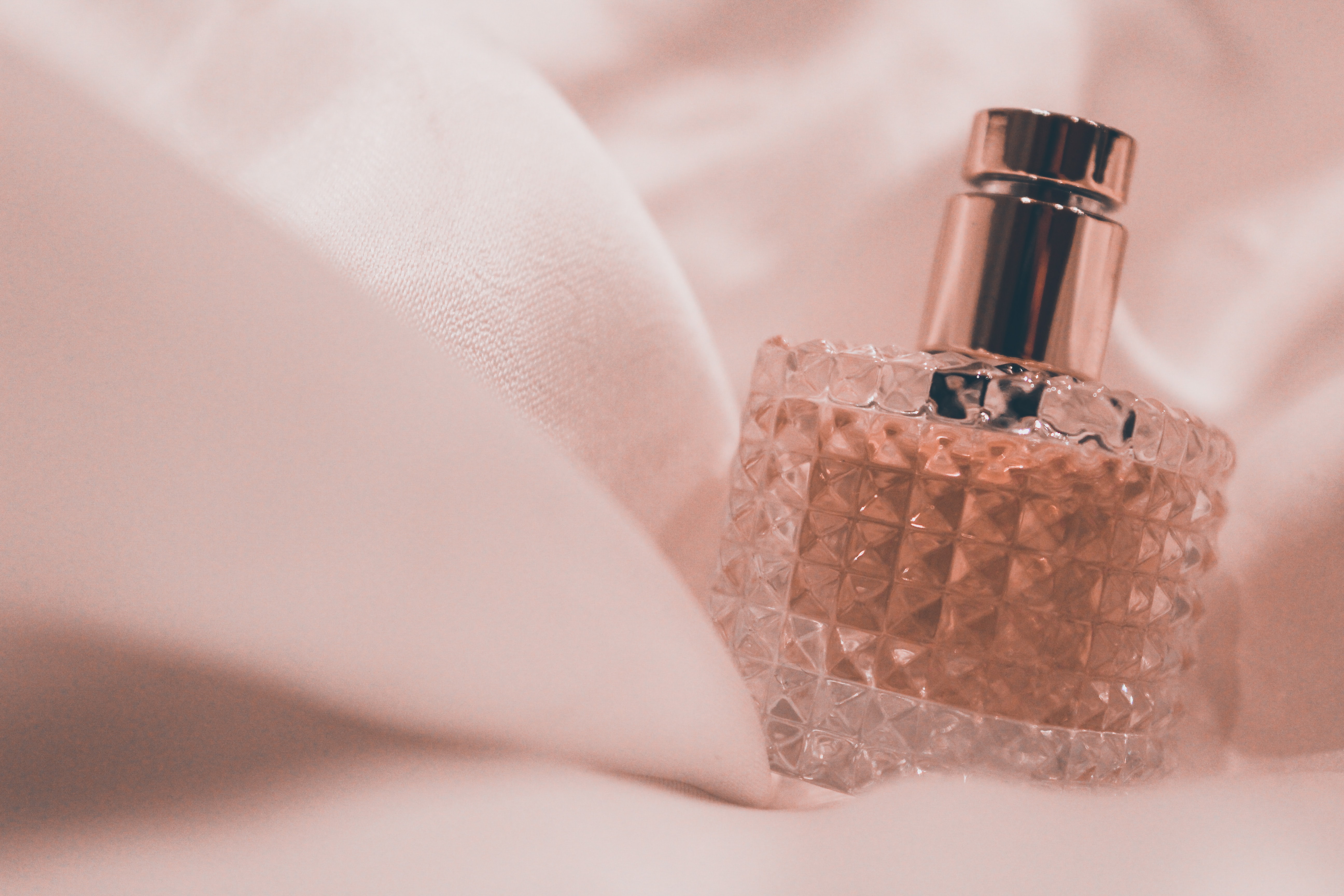We look for pleasant scents in our perfumes, cosmetics, air fresheners, and cleaning products… But have we stopped to think about what these perfumes contain and what effects they may have on our body and health?
Anti-perfume activists or aromatherapy advocates? Where do we stand? Some components have been classified as endocrine disruptors, others as carcinogens, or environmentally toxic, but the truth is that the beneficial effects of certain molecules in the central nervous system have also been described.
Dr. Celia Gonzalo Gleyzes – Neolife Medical Team
Perfume: man’s companion through the ages, for better or worse
Human metabolism generates unpleasant odors through sweat, fat (sebaceous glands), and breathing. If we analyze them from a biochemical point of view, these odors are composed of fatty acids, steroids, amino acids, and biogenic amines.
From the beginning, man has always tried to disguise or mitigate them. Even ancient cultures used perfumes, which they made from mixtures of plants (flowers, leaves, fruits, resins, seeds, barks etc.) or from animal glands (musk, civet musk, ambergris, etc.). Oils (olive, almond, coconut, grapeseed, etc.) were used to facilitate absorption and application.

A secret recipe
Oftentimes, there is no way to find out the components of a perfume, which are only listed as “fragrance” or “scent”. This is what we call a “trade secret” to limit imitation. It’s a real shame. We have no information about the molecules used (good or bad) and their concentrations. Sometimes, we may see a list of ingredients.
The age of chemistry
As already mentioned, only natural components were used before, but since the development of chemistry this has changed. This is sometimes done to improve stability and prevent the oxidation of the perfume. On the other hand, some manufacturers resort to the use of fixing agents, dyes, and preservatives, such as alcohol, parabens, phenoxyethanol, methylisothiazolinone, nickel sulfate, etc.
Fragrances are all around us, from the air freshener they pump into shopping malls, to the scent in our hair gel, car air freshener, laundry detergent, deodorant, incense, or scented candles…
Researchers warn us about the potential harmful effects of fragrance compounds. They may alter hormonal circuits, be responsible for pathologies such as depression or autism, certain types of cancer (prostate and breast cancer), endocrinopathies (gynecomastia), liver damage, etc.
Air fresheners (or scented candles or incense) affect the air quality of our homes and release hundreds of toxic volatile organic compounds (VOCs), such as limonene, alpha and beta-pinene, ethanol, acetone, etc.
Compounds present in some fragrances
Most fragrance compounds belong to one of three families: phthalates, synthetic musks, and sensitizers.
- Phthalates
These are phthalic acid esters, they have numerous applications, and in perfumery, they are used to improve the fixation of perfume (which makes it last longer), through the use of dimethyl phthalate (DMP) and diethyl phthalate (DEP).
Phthalates are considered to be endocrine disruptors and may affect bone mineral density and sperm quality, and contribute to the development of obesity…
In children, DEP and DMP are connected to behavioral and developmental disorders.
In trials with adult animals, it was observed that exposure to these substances may lead to the apoptosis (death) of neurons in the hippocampus.
2. Synthetic musks
These are odorous synthetic chemicals. Natural musk is obtained from the secretion of a gland found in musk deer.
The categories of synthetic musks are: nitro, polycyclic, macrocyclic, and alicyclic musks. The last two categories are thought to be somewhat safer.
Several nitro musks are carcinogenic and have estrogenic activity (their use is banned or restricted, but once again, if the components of our perfume are not specified, it is difficult to identify them).
Ambrette (muskmallow), a type of nitro musk, may cause limb weakness and peripheral demyelination.
Galaxolide and tonalide (polycyclic musks) inhibit a specific enzyme (PMPMEase), predisposing individuals to degenerative problems.
3. Sensitizers
These compounds are substances that are able to produce allergic reactions in unaltered tissues after repeated exposures.
As we will see below, they are present in plants (essential oils):
- Citral: present in citrus fruits. It may cause skin problems, benign prostatic hyperplasia, inhibit the synthesis of retinoic acid, and in animal models, modify behaviors.
-
Linalool: present in lavender. It causes estrogenic and antiandrogenic activity. Use not recommended in children. It may cause problems such as gynecomastia.
Beneficial actions: neuroprotection through antioxidant and anti-apoptotic pathways; anticonvulsant, anxiolytic, and antinociceptive (pain control) properties.
-
Limonene: lemon scent. Exposure to this compound may cause sedative, anxiolytic, antinociceptive, and antioxidant effects. The neuromodulation of the GABAergic, adrenergic, and dopaminergic systems has also been described.
Here are some examples; the list is long: geraniol, citronellol, eugenol, and farnesol also have various effects, from anticonvulsant and anesthetic to anti-inflammatory (1).
Of course, these effects will depend on the concentrations, administration routes, and guidelines, but they leave an interesting field for their use. Some pharmaceutical companies are already producing them (see Pranarom with its capsules for relaxation).
Perfume-related pathologies
- Effects on the nervous system
Intense smells may cause headaches and even migraines. There is also an influence on the risk of depression on the basis that aromatic components (some) have a similar effect to pesticides, altering hormonal secretions and affecting neurotransmitters.
Human skin and organs have numerous odor receptors (approximately 400). Exogenous odor molecules attach themselves to these olfactory receptors belonging to the G protein-coupled receptor family (GPCR). These receptor proteins are expressed on cell surfaces including that of neurons.
Olfactory neurons with specific receptors also express estrogen receptors, which explains the link between smell and sex hormones. In animal models, smell has been found to influence social behaviors such as solitary or gregarious behavior. The vomeronasal organ, the vascularized region of the olfactory system, interacts with peptides or steroid hormones, modulating behavioral activities.
- Skin and airway hypersensitivity
Some perfumes may cause contact allergies or asthma. There is talk of photosensitivity with some compounds, such as bergamot oil. Exposure to sunlight produces photo activation releasing toxic components that may also cause hemolysis.
Perfuming an environment with incense is not a good idea. The smoke generated by combustion releases toxic gases such as CO, CO2, NO2, SO2, benzene, toluene, xylenes, aldehydes and polycyclic aromatic hydrocarbons. Clearly, it may be a risk factor for lung cancer.
- Polycystic breast and ovarian cancer
Fragrances with estrogenic compounds (parabens, phthalates, and nitro musks) may cause breast cancer. To sum up the metabolic pathway: they would act by favoring aromatase activity, an enzyme that allows the conversion of androgens into estrogens. It is also connected to breast tissue hyperplasia and polycystic ovary syndrome (the production of endogenous progesterone probably does not counteract the effects of the estradiol).
A high level of aromatase activity induces the production of growth factors (TGF-beta, EGF, and bFGF).
- Disorders in the fetus and newborn
Some synthetic aromas (such as nitro musks) are lipophilic substances, i.e. they can be absorbed and accumulated within the body’s adipose tissue, even reaching breast milk and then passing on to the nursing baby. Studies conducted on animals show that synthetic musks may cause growth problems.
Another study links genital abnormalities in newborn (undescended testicle, unclosed penis – hypospadias-) with exposure to compounds such as phthalates present in cosmetics.
Numerous studies show that several fragrances cause fetal neuromodulation (even though they’re in the womb).
It is believed that exposure to chemicals (through the placenta or breast milk) may contribute to diseases such as autism (a disorder that presents alterations in the mirror neuron system of the parieto-frontal region).
- Liver toxicity
Polycyclic musks that have entered the bloodstream reach the liver and may block certain enzymatic activities, altering the body’s detoxification systems. Cases of hepatitis with elevated transaminase levels (also described with exposures to toluene, used in perfumes and dyes) (2) may then occur.
Recommendations
That clean smell starts with proper hygiene and ventilation (so important in times of COVID), which will prevent us from inhaling other toxic substances. Let’s avoid combustion (particle-generating incense), have more plants (with or without scented foliage), discard scented candles, and perfume diffusers that might contain synthetic musks. Let’s carefully select our perfumes (good quality or with non-harmful components) and not abuse scented cosmetics (there’s a risk of synergy between various molecules). And finally, as with food, we should read labels and continue to inform ourselves. Our knowledge is constantly evolving.
BIBLIOGRAPHY
(1) Pinkas A, Gonçalves CL, Aschner M. Neurotoxicity of fragrance compounds: A review. Environ Res. 2017 Oct;158:342-349. doi: 10.1016/j.envres.2017.06.035. Epub 2017 Jul 3. PMID: 28683407.
URL: https://pubmed.ncbi.nlm.nih.gov/28683407/
(2) Patel S. Fragrance compounds: The wolves in sheep’s clothings. Med Hypotheses. 2017 May;102:106-111. doi: 10.1016/j.mehy.2017.03.025. Epub 2017 Mar 22. PMID: 28478814.
URL: https://pubmed.ncbi.nlm.nih.gov/28478814/

